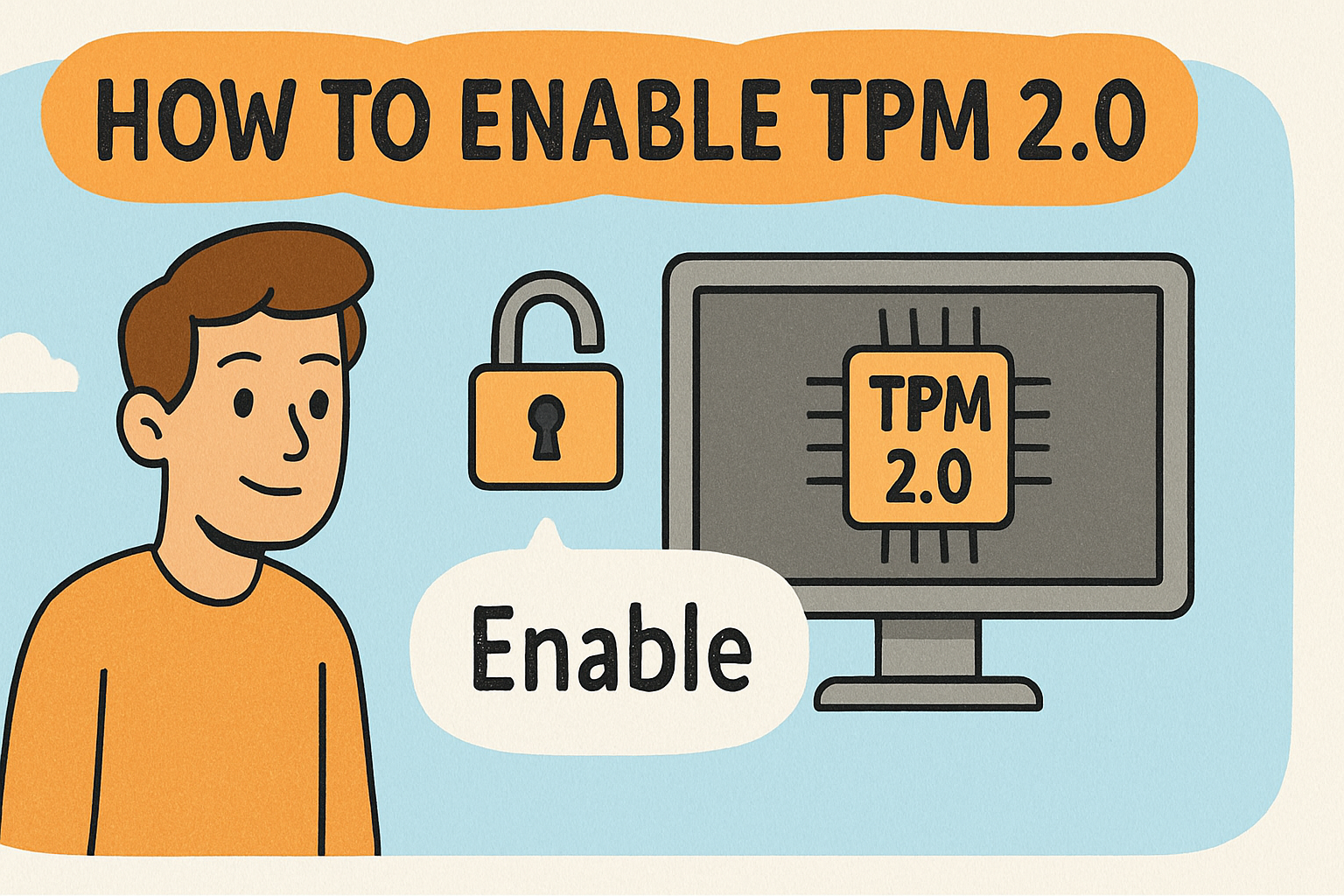How to Know Whether Your Phone Is Hacked: The Complete Expert Guide
Updated on November 28, 2025, by Xcitium

Is your smartphone behaving strangely lately? Maybe it’s heating up for no reason, your battery drains unusually fast, or data disappears mysteriously. If you’ve wondered how to know whether your phone is hacked, you’re not alone. Every year, millions of smartphone users — including CEOs, IT managers, and security professionals — become targets of mobile cyberattacks.
Today, smartphones are more than communication tools. They’re endpoints holding sensitive data, business communication, financial details, and access to corporate systems. That makes them a prime target for hackers, spyware developers, cybercriminals, and nation-state attackers.
This comprehensive guide will walk you through clear signs your phone is hacked, how hackers break into devices, how to check for malware, and how to secure your smartphone with proven cybersecurity methods.
Let’s get into it.
What Does Phone Hacking Actually Mean?
Before you can detect a compromise, you need to understand what “hacking” means in the mobile world. Phone hacking isn’t always a dramatic takeover—it can be incredibly subtle.
Hackers may:
-
Install spyware to watch your messages
-
Track your location silently
-
Activate your microphone or camera
-
Redirect your traffic through malicious servers
-
Steal corporate credentials and authentication tokens
-
Log keystrokes to steal passwords or banking info
The biggest challenge? Most mobile malware is designed to stay completely hidden. That’s why understanding the signs is critical.
10 Strong Warning Signs Your Phone Is Hacked
Below are the most common, high-confidence indicators used in cybersecurity investigations.
1. Unusual Battery Drain
If your phone suddenly loses battery faster than normal, it could indicate:
-
Spyware running in the background
-
Hidden apps transmitting data
-
Remote access tools (RATs) actively recording
Battery analytics apps can help identify which processes consume the most energy.
2. Phone Overheating (Even When Idle)
Phones heat up during gaming or video calls, but if overheating happens while idle, it’s a serious red flag.
Why? Malware often:
-
Runs heavy processes
-
Connects to remote servers
-
Collects data constantly
This constant load generates abnormal heat.
3. Data Usage Spikes
Spyware sends data back to attackers — sometimes in the background every few minutes.
Watch for:
-
Sudden 2–3× jumps in mobile data
-
Data being consumed while you sleep
-
Apps using data that shouldn’t
This is one of the clearest signs of hidden activity.
4. Strange Apps or Tools You Didn’t Install
Hackers often install:
-
Keyloggers
-
Surveillance apps
-
Remote control tools
-
Malicious updates
If you find any unknown app, treat it as suspicious.
5. Slow Performance or Lag
Phones naturally slow with age, but sudden lag can be caused by:
-
Spyware hogging memory
-
Malicious background tasks
-
Crypto-mining malware
Crypto-miners especially cause massive performance drops.
6. Pop-Ups, Redirects, or Full-Screen Ads
Adware is often underestimated, but it’s a sign your phone may be compromised through:
-
Malicious browser extensions
-
Rogue apps
-
DNS hijacking
If you see ads when no app is open, scanning is urgently needed.
7. Suspicious Messages Sent From Your Device
If friends report receiving:
-
Strange texts
-
Unknown WhatsApp messages
-
Random links
…it means your phone could be used for phishing.
8. Microphone or Camera Activates by Itself
This is a severe indicator. Advanced spyware can:
-
Record meetings
-
Capture video
-
Extract business conversations
If you notice your camera light flashing or mic indicator active, investigate immediately.
9. Delayed Shutdown or Restart
Malware resists shutdown to maintain persistence on the device.
If it takes unusually long to turn off, something is likely running beneath the surface.
10. Unknown Charges, Subscriptions, or Transactions
Some malware signs appear financially:
-
Premium SMS services
-
Unauthorized purchases
-
Banking app anomalies
Attackers often monetize devices this way.
How Hackers Break Into Your Phone
Understanding the attack vectors helps you prevent future breaches.
1. Malicious Apps (Most Common)
Side-loaded apps or unofficial APKs often contain hidden spyware.
2. Phishing Links & Smishing
Attackers send texts or emails that:
-
Steal credentials
-
Install malware
-
Trick you into enabling permissions
3. Public Wi-Fi Attacks
On open networks, hackers can:
-
Intercept traffic
-
Inject malicious scripts
-
Steal session cookies
4. Zero-Day Exploits
High-profile individuals (CEOs, IT managers) are often targeted with:
-
Pegasus-like spyware
-
Zero-click exploits
-
OS vulnerabilities
5. SIM Swaps
Criminals hijack your SIM to intercept:
-
OTPs
-
Calls
-
MFA codes
This is commonly used to drain bank accounts or breach corporate email.
How to Know Whether Your Phone Is Hacked — Step-by-Step Diagnosis
Now let’s walk through a systematic, cybersecurity-approved method.
Step 1: Check Battery Usage Analytics
Go to:
-
Android: Settings → Battery → Battery Usage
-
iPhone: Settings → Battery
Look for apps consuming unusually high energy.
Step 2: Review Installed Apps
Delete any app you don’t recognize.
Watch for:
-
System apps with strange names
-
Dual apps
-
Device admin apps
Step 3: Analyze Data Usage
Check mobile and Wi-Fi usage charts for suspicious spikes.
Step 4: Run Professional Mobile Security Scans
Use tools like:
-
Xcitium Mobile Endpoint Security
-
Malwarebytes
-
Sophos Intercept X Mobile
These identify malicious processes invisible to the user.
(Note: Consumer antivirus apps detect only ~30–40% of advanced spyware.)
Step 5: Check for Configuration Profiles
On iPhone, go to:
Settings → General → VPN & Device Management
Remove unknown profiles immediately.
Step 6: Look for Jailbreak or Root Indicators
If you didn’t do it yourself, that’s a sign of compromise.
Step 7: Monitor Network Traffic
Advanced users and IT teams can use:
-
Packet sniffers
-
Mobile MDM dashboards
-
Endpoint security logs
This reveals hidden data exfiltration.
Step 8: Inspect Permissions
Malware often demands:
-
Location tracking
-
Camera access
-
SMS reading
-
Accessibility controls
Disable anything unusual.
Step 9: Factory Reset (Last Resort)
This removes most malware—except rare bootloader-level infections.
Before resetting:
-
Backup important files
-
Remove external SD cards
How to Protect Your Phone From Future Hacks
Here are proven, enterprise-level security practices.
Use a Mobile Threat Defense (MTD) Solution
For organizations, this is essential. Tools like Xcitium MTD protect against:
-
Zero-day attacks
-
Malicious apps
-
Network threats
-
OS vulnerabilities
Enable Multi-Factor Authentication
Protect all:
-
Email accounts
-
Cloud apps
-
Banking apps
Avoid Public Wi-Fi Without a VPN
Always connect through:
-
Corporate VPN
-
Zero-trust network access (ZTNA)
Disable Unknown Sources (Android)
Prevents sideloaded malware.
Use Strong Device Lock Controls
-
6-digit PIN minimum
-
Biometric unlock
-
Auto-lock enabled
Update Your Operating System Frequently
Patches fix vulnerabilities quickly exploited in the wild.
Be Cautious With Links & Attachments
Even security professionals fall for sophisticated attacks.
When You SHOULD Worry — High-Risk Scenarios
Certain indicators require immediate action:
-
Your phone receives strange MFA prompts
-
Contacts report odd messages
-
Your business accounts experience unauthorized access
-
You receive SIM card change notifications
-
Unknown device logins appear in email or apps
In these cases, assume your phone is compromised and respond immediately.
Examples of Advanced Phone Hacks
1. Pegasus-Style Spyware
Targets executives, political leaders, and high-value individuals.
Zero-click vulnerabilities allow silent installation.
2. Corporate Espionage Tools
Used to:
-
Monitor internal communication
-
Steal IP
-
Track executive movements
3. Banking Trojans
Record keystrokes and screen activity.
4. Stalkerware
Often used by insiders but behaves like commercial spyware.
FAQ: How to Know Whether Your Phone Is Hacked
1. Can someone hack my phone just by calling me?
Normally no, but advanced zero-click exploits can trigger on missed calls.
2. Does factory resetting remove hackers?
Yes — for most malware. But not all advanced boot-level or spyware implants.
3. Can iPhones get hacked?
Yes. iPhones are harder to hack, but not immune to spyware, jailbreak attacks, or social engineering.
4. What should I do first if I think my phone is hacked?
Start with:
-
Turning off mobile data
-
Running a security scan
-
Checking for unknown apps
Then escalate to IT or security teams.
5. Why would a hacker target my phone?
Reasons include:
-
Corporate email access
-
Banking info
-
Stored passwords
-
Spyware for surveillance
-
Identity theft
Final Thoughts
Knowing how to know whether your phone is hacked is essential in a world where mobile attacks grow more advanced each year. The sooner you identify the warning signs, the faster you can contain potential damage — whether it’s personal data theft, financial fraud, or corporate compromise.
If you’re responsible for organizational security — or simply want advanced protection — it’s time to strengthen your mobile defenses.
Ready to Protect Your Organization and Mobile Endpoints?
👉 Request an Xcitium Demo Today:
https://www.xcitium.com/request-demo/















